Croatia: Distinctive Traditional Costume Features On New Gold And Silver Proof And Colour Coins
The Croatian National Bank issue new gold and silver collector coins in the Croatian Heritage series.
Featuring motifs honouring the island of Susak, the design highlights a very special national costume. Of Croatia’s 1244 islands located in the Adriatic, only 47 of these islands are populated, but every single inhabited island has its own culture, customs and individual history. Located in the north of the warm Adriatic Sea, the small island is famous for its sandy beaches, beautiful folk costumes and yellow sand from which the island emerges. Susak is about 3 kilometres or 1.9 miles long and 1.5 kilometres or, 0.9 mile wide, and covers an area of approximately 3.8 square kilometres or, 1.5 square miles. Susak's highest elevation point is 98 metres or, 322 feet above sea level. Despite its diminutive size, the island benefits from an overabundance of natural beauties and distinguishable sights, constituting an important part of Croatia’s natural, cultural and historical heritage.
The island’s name Susak is believed derive from sampsychon, an old Greek word for the herb oregano which grows in abundance on the island and was later transformed into sansegus and sansacus in Romance languages and finally adopted by Slavs as the name it has been known as. Little is actually known of the origins or local history of the island and this was mostly due to the inhabitants not having the ability to record in writing. As such, most of Susak’s folklore has been handed down in oration. One of those colourful orations or legends has it that in antiquity, Jason and the Argonauts and Medea were said to have taken refuge here on the island to escape pursuit by Absyrtus, the sorceress's brother, after they had stolen the Golden Fleece.
According to archives which have been recorded since the end of the 17th century, Susak has never had more than 1700 inhabitants at one time. The highest number recorded in 1936 showed there were 1,656 residents and, the most recent census recorded just 139 year-long residents. Amazingly, there are actually many more Sansegots - people of Sukak heritage living all over the world with more than 2500 living in the New York / New Jersey area of the United States alone. Susak is also renowned for its special dialect, a local idiom with both a Romance and Slavic vocabulary which is limited to the very small population and so different from standard Croatian that few mainlanders can completely understand it.
One of the most recognisable traditions on the island is their unique costume which is as vivid as it is short. In fact, the costume young women on Susak includes short, colourful skirts with pink or orange woollen socks and are noted for being the shortest traditional skirts in Europe, and probably in the world, making them extremely striking and memorable. Today, the small island is a best-kept secret in terms of a desirable hot-spot with tourists who want a location not on the ‘beaten path’. But, due to its remote location, it is very difficult to reach as there is no airport and a limited ferry service.
The gold and silver proof and colour coins share the same design and are produced by the Croatian Mint at their facilities in Sveta Nedelja on behalf of the Croatian National Bank. Designed by sculptor Paula Banić Vudrag.
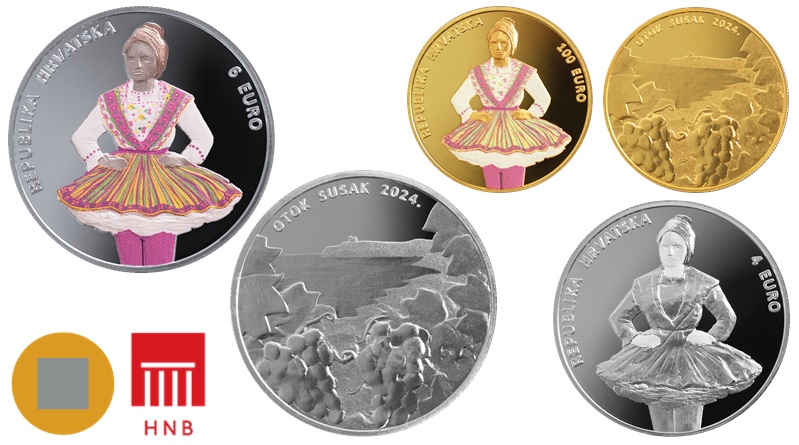
The obverse of the coin features a cartographic representation of the island of Susak, along with an abstract image of Cape Darto, Susak’s most eastern cape. Also shown is a small structure which is the Blessed Virgin’s chapel. In the foreground, is an arrangement of grapesand vine leaves, symbolising the many vineyards on the island. Above the primary design is the text OTOK SUSAK 2024. The reverse side features a vividly coloured image of a standing young woman wearing Susak’s ceremonial and traditional costume which has been beautifully replicated on the coin’s proof surface. Along the left rim is the text REPUBLIKA HRVATSKA (Croatia) and along the right rim is the denomination 100 EURO (gold) 6 or 4 EURO (silver)
| Denomination | Metal | Weight | Diameter | Quality | Maximum Mintage |
| 4 Euro | 999.9 Silver | 31.1 g. | 38.6 mm. | Proof | 1,000 |
| 6 Euro | 999.9 Silver | 62.2 g. | 45 mm. | Proof & Colour | 400 |
| 100 Euro | 999.9 Gold | 31.1 g. | 32 mm. | Proof & Colour | 200 |
Dispatched from the 19th August, both the gold and silver coin options are encapsulated and presented in a custom case accompanied with a numbered certificate of authenticity. For additional information, please visit the e-webshop of the Croatian Mint.

Download the Greysheet app for access to pricing, news, events and your subscriptions.
Subscribe Now.
Subscribe to RQ Red Book Quarterly for the industry's most respected pricing and to read more articles just like this.
Author: Michael Alexander


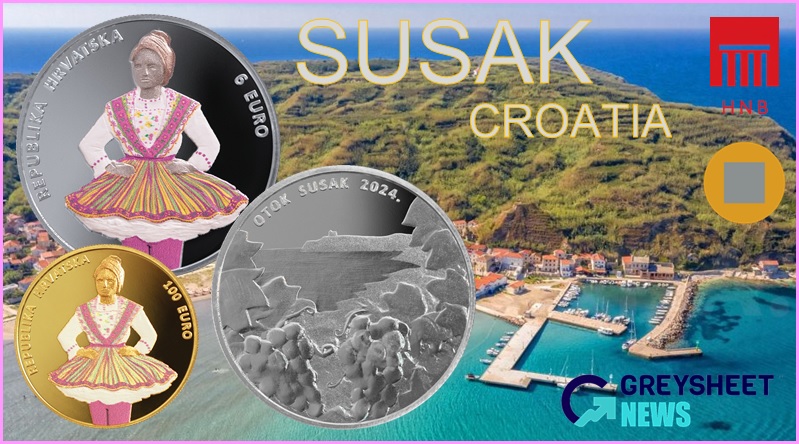



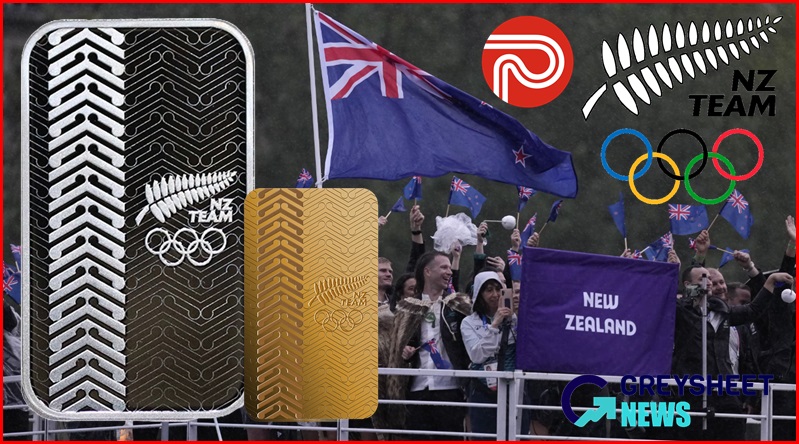
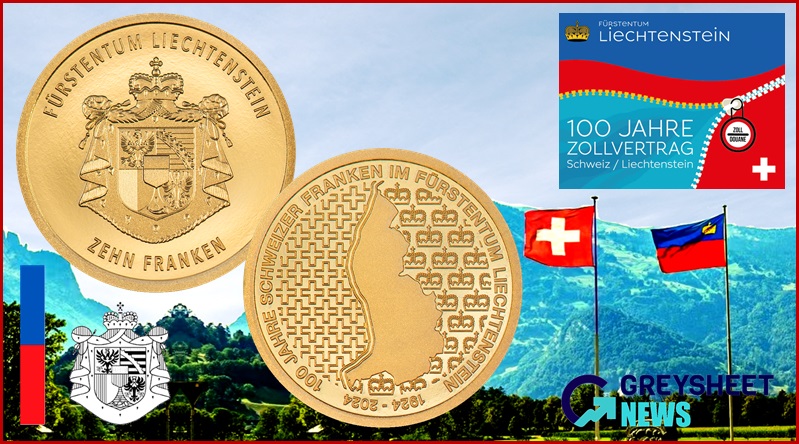
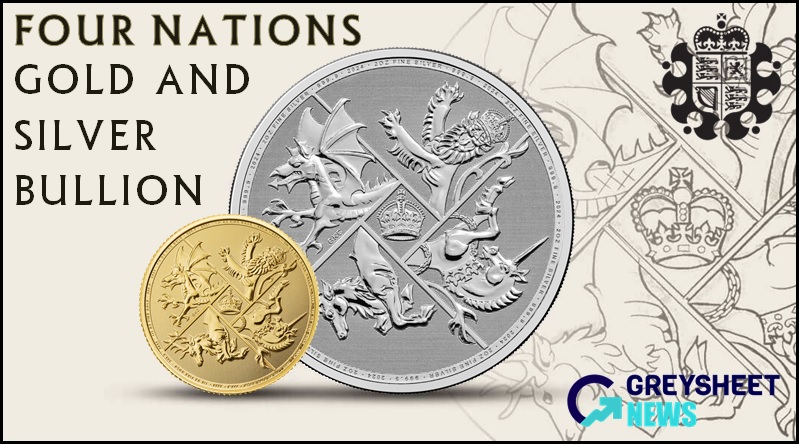
Please sign in or register to leave a comment.
Your identity will be restricted to first name/last initial, or a user ID you create.
Comment
Comments